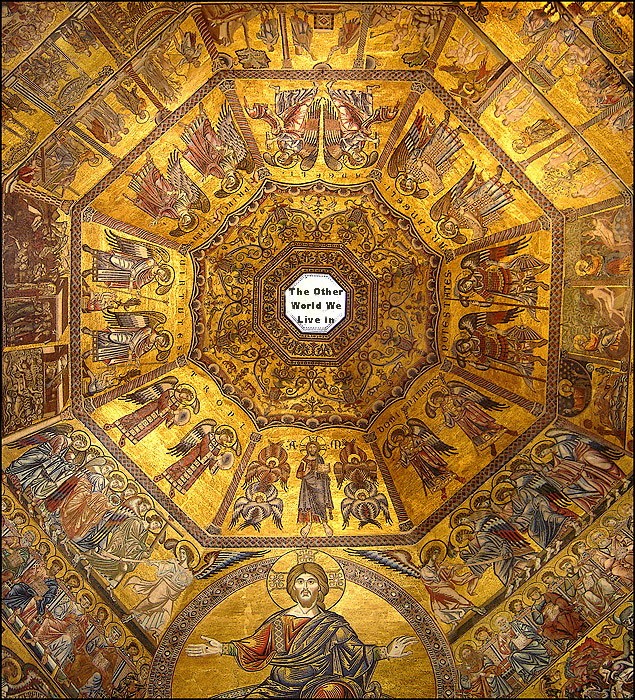
Before talking about angels, we should be reminded that a consideration of invisible realities need hardly be arcane, or the subject-matter as “supernatural” as one might suspect. Reflect, for a moment, on a few dimensions of the world we take to be quite real, but cannot pick up with our senses:
1) spatially: there is far more world, more cosmos, out there than your eyes can even approximately capture – immeasurably more. This is true whether we limit ourselves to the expanse of the Earth or include the some two trillion galaxies currently spotted in our universe. That vast context, though unseen, both contains and conditions what you do see and experience. And these veiled immensities you accept without ever viewing them, and you are right in doing so.
2) chronologically: there are thousands of years of past time – and if we think geologically, millions – which you cannot now experience, or even remember, and yet which have profoundly influenced your world, and all that is in it. Beyond this, of course, lies our unpredictable future, even more out of view. All this you also accept as real (or soon to be so), although it has never been a part of your sensory experience.
3) scientifically: we accept as a matter of fact that there are quadrillions of atoms buzzing within us and around us, but we can’t see a single one of them. Even light we actually never see in its own right; we see things in light, but the light itself (along with all other forms of electromagnetic radiation) never slips as such into our field of vision. We also promptly answer our cell phones, firmly convinced of the existence of highways of invisible radiation passing between them and our interlocutors.
But nothing drives this home more dramatically than the following: for decades astrophysicists have been cautioning us that the vaunted conquests of modern science have only shown us about 5% of all the material reality that exists. The other 95% – so-called “dark matter and energy” – still remains largely unidentified. Nonetheless, this invisible world has an enormous impact on the modest 5% that we do (more or less) understand.
Thus, on a material basis alone, any scientifically enlightened view of reality must concede that beyond the tiny slice of cosmos we are able to perceive, there is incalculably more that is unseen. And despite its invisibility – whether intrinsic or due to circumstance – we tranquilly and confidently affirm its existence.
Now add to all this a fourth, and even more emphatically undisputed fact:
4) Virtually all of known historical cultures and religions have accepted the existence of one sort or another of subtle material or completely immaterial beings, usually of a personal nature. Among countless others, we read of hierarchies of Greco-Roman, Egyptian, Mesopotamian, Celtic, Nordic, Indian, Chinese, Andean or Meso-American gods, along with sprites, genies, fairies, elemental spirits, kamis and an almost limitless variety of minor deities. Only a small number of traditional skeptics of the past, and (of course) today’s confessional materialists have ever disputed this.
The irony is that contemporary nay-sayers inevitably call on modern science to underwrite their twilight of the gods. But despite their appeals, recent physics is often more skeptical about the solidity of the matter these doubters confide in, than about the reality of the spirits whose existence they impugn. And even more telling is this: science and faith, contrary to expectations, have joined hands in one incontrovertible claim – they agree that the totality of all that exists contains far more than what we can see and touch with our senses, explain with our reason, or even detect with our most sophisticated instruments. Far from coddling us in our doubts about spirits, today’s science gives us little warrant, and even less excuse, for excluding the angels from our conspectus of reality.
From my book, The Other World We Live In, Angelico Press, 2021. Printed with permission.


